Who doesn’t love zinnias? They are quick to start from seed, easy to grow, and attract butterflies to your garden. Zinnias also make lots of beautiful flowers with long stems for arranging.
Zinnias come in a rainbow of different colors. And it’s really a RAINBOW–bright, bright, bright!
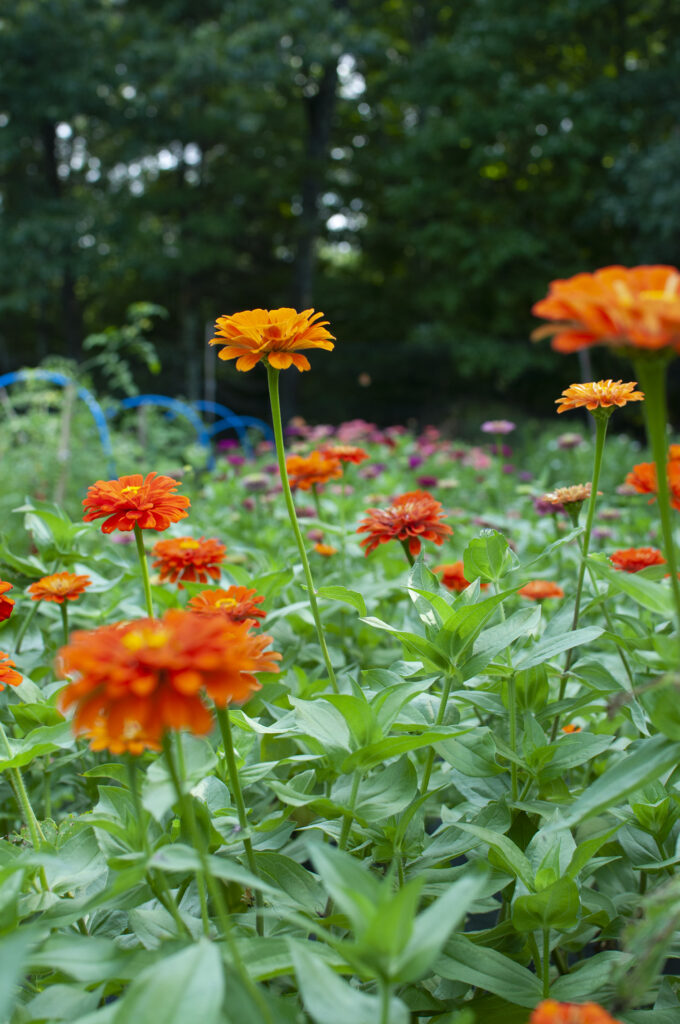

My team likes to make fun of me and say that I hate colors. This is not true! I love me a punchy, vibrant color palette.
And for punchy, vibrant color palettes, zinnias deliver. Check out this colorful bridal bouquet that we made, which has yellow, pink, and red zinnias front and center:


Photos by Adam Okimatsu
But, I do also love a softer color palette, with more neutral tones.
These softer color palettes tend to be more asked-for in wedding work and by our florist customers, too.
So we’ve hopped on the newly popular plant breeding train, and are trying our hand at breeding soft-hued zinnias.

In 2020, I purchased a small packet of very special zinnia seeds from Dawn Creek Farm, where they had been working for years to breed softer-colored zinnias. I bought their unique mix of seeds from that project.
We grew those seeds out in 2021. We isolated them from all other zinnias, so they would cross-pollinate with each other, but not with other, brighter-colored zinnias. Here’s what our trial patch looked like that season with the Dawn Creek Farm mix.


Some really amazing colors showed up in that patch!
We saved seeds from some plants we especially liked. However, we didn’t keep the seeds separated by color, so we just had a big mix. If you came to our final farmer’s market of 2021, you might have taken home a packet of these seeds as a gift!
This year, I planted a patch of those seeds at my house, so they would again be isolated from other zinnias that we had growing at the farm.
Our 2022 zinnia breeding patch is in my backyard, next to our recycled window greenhouse (which still needs its door properly hung!)


Having the zinnia breeding patch at my house meant that I could have a very special relationship with it!
I developed a summertime morning routine of walking out to the zinnias first thing, barefoot, usually while still in my pajamas.
On these early-morning barefoot zinnia walks, I often saw the same family of deer, with two little spotted fawns!


I moved slowly on these mornings, taking my time to look at all the different flowers emerging in our trial patch.
There are some real stunners! Here are some of my favorites.




We had a range of colors appearing in the breeding patch, which makes sense, given that we mixed all the seeds from 2021.
There was also a range of flower forms. We had fully double, semidouble, and single flowers popping up. I prefer the semidouble and fully double flowers.
This flower is semidouble, and it has the look of a puffy, crested center.

There were also flowers appearing with interesting petal textures, like curly or cactus-like petals.
The curving, non-uniform petals of this flower give it a shaggy appearance that I quite like.

There were also differences in the colors of the zinnias’ center disks. The unopened disk florets in the very center showed up in different colors, as did the ring of open disk florets.
These two flowers share the same petal color, but the top one’s opened disk florets are bright yellow, and the unopened center disk is a bright red. The bottom flower’s center disk and disk florets are more muted purple colors. These differences make the blooms feel very different from each other.

I slowly learned the different colors, flower shapes, petal types, and other patterns that were in our breeding patch, and I selected a few special plants to try hand-pollinating myself.
I put organza bags over these blooms, and came out with a paintbrush to spread pollen by hand.



Pollinating the zinnias by hand was very tedious.
I also learned that the plants’ pollen was at its freshest around noon, when I was usually at the farm and not home to pollinate.
So I eventually ditched the bags and left the pollination up to the bees.

Leaving these plants to open-pollinate with each other does mean that we’ll have less control over the flowers that appear year.
As I’ve saved seeds from our zinnias this year, I have kept the colors separated, but I only know the seed parents for each seed we saved, and not the pollen parent. 50% of the genetics are left up to chance!
There are ways of isolating individual plants with each other, and trapping pollinators inside, to assure that only the colors you want get crossed with each other. Perhaps next year we will try one of those strategies.

I am not the most patient person, so I did not wait until the zinnia flower heads were fully dead and dried to collect their seeds.
Instead, I pulled flowers that were about half-pollinated, and still retained their petal color.
This helped me keep them sorted, and meant I could collect a little seed every day instead of waiting to do it all at the end of summer.

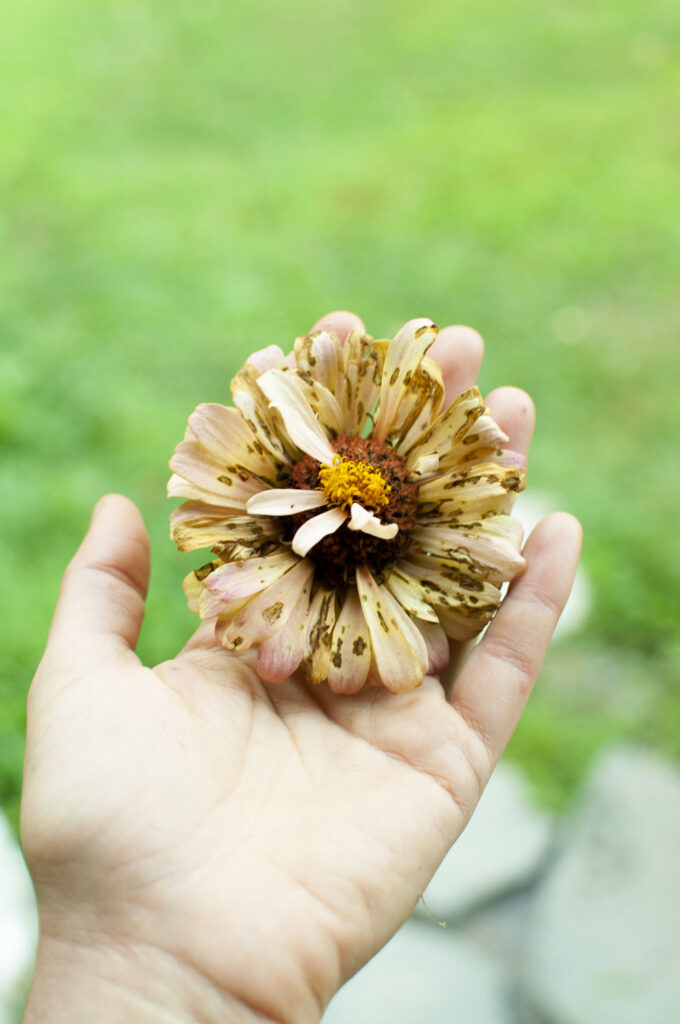

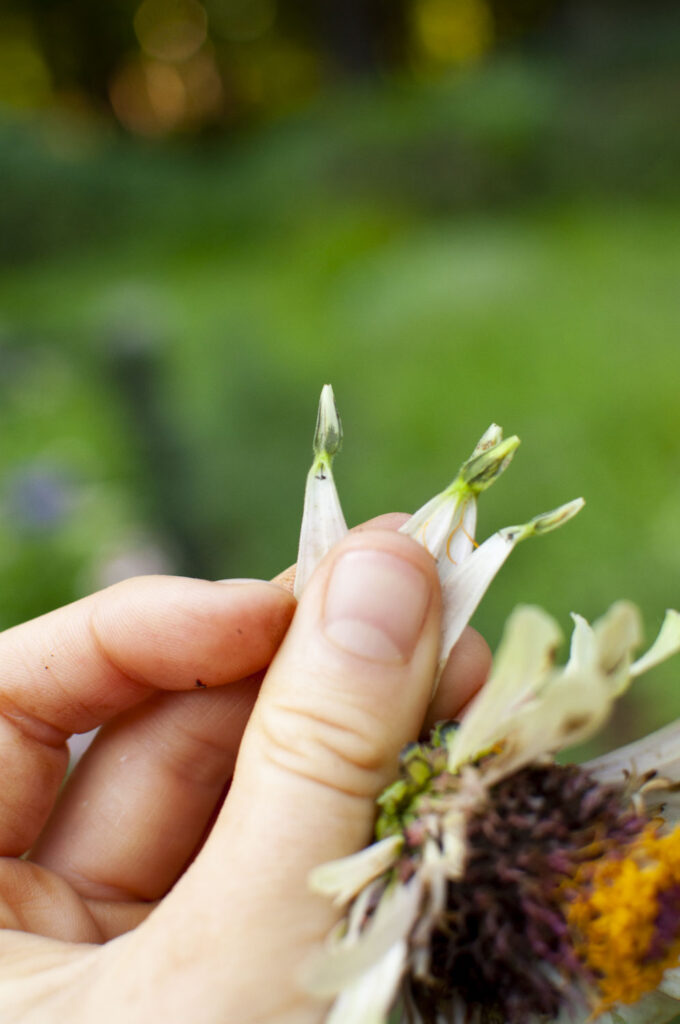
Zinnias have two types of seed. One type of seed forms at the ends of the zinnias’ petals. These are the ray seeds, and they form from cross-pollination.
The little thread-like things in the image below have a sticky coating that collect pollen from visiting bees, and that’s what pollinates the seed at the end of each petal.
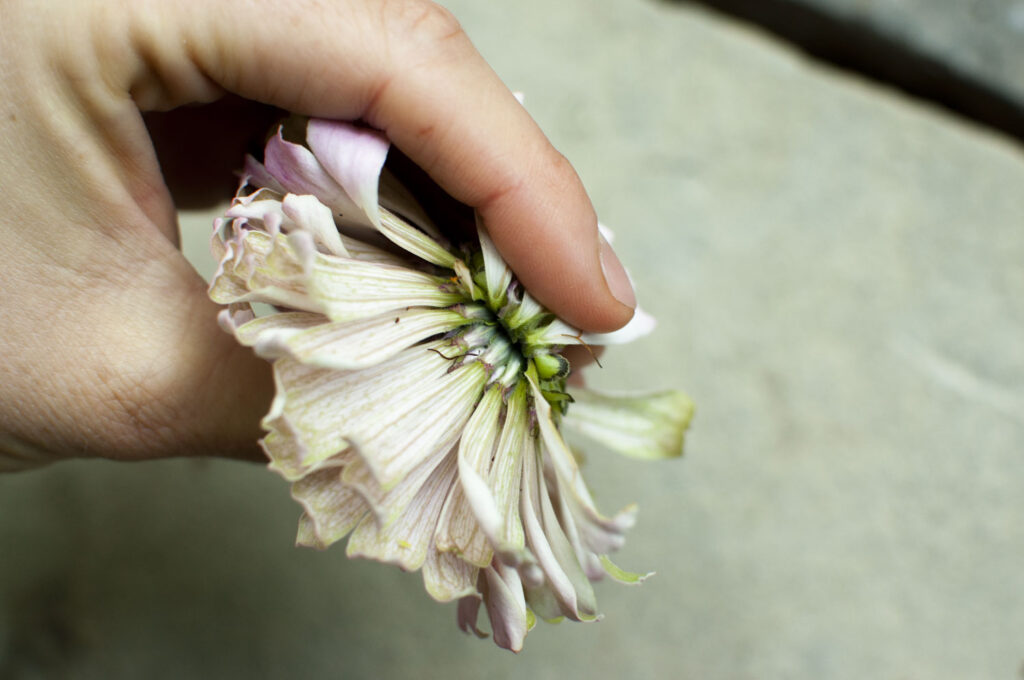
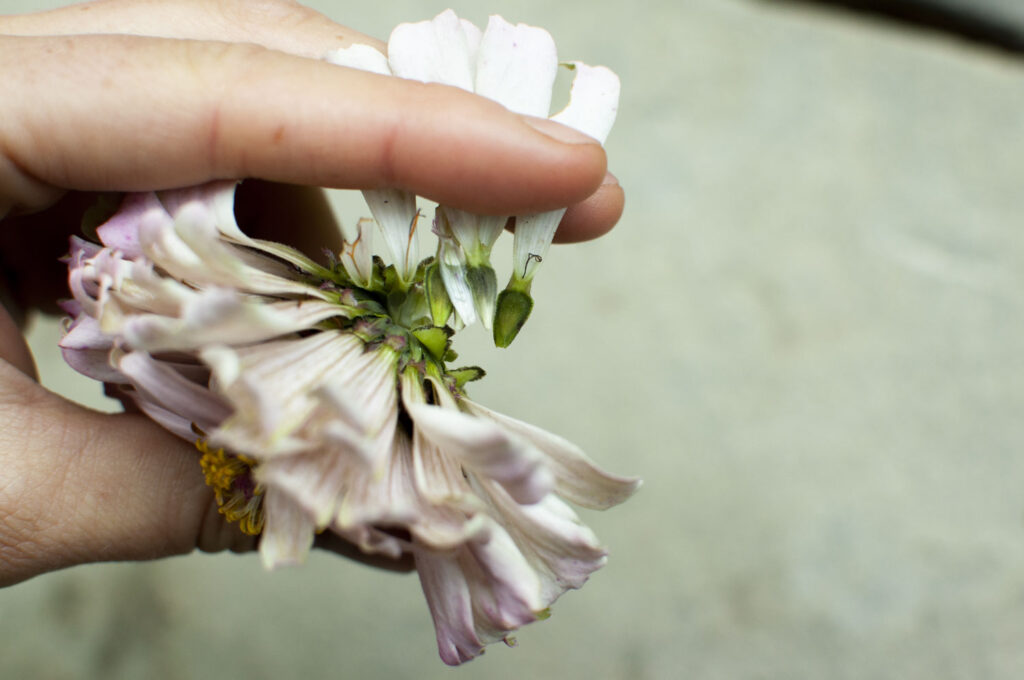

The other type of zinnia seed is a self-pollinated seed, so it may or may not produce a viable plant. Genetics are crazy!
These seeds are disk seeds, and they form in the center of the zinnia flower head. They have a different shape and color from the ray seeds.


We saved both types of seeds from our zinnias.
Hopefully, some of the self-pollinated disk seeds from the colors I especially liked will produce similar plants next year! And hopefully some of the cross-pollinated ray seeds will, too.
Next year, my goal is to begin isolating individual colors from this pastel mix. Some of my favorites have names, like “Palest Pink,” “Cantaloupe,” “Pink Flamingo,” and “Creamy Yellow.”
We may have some packets of these zinnia seeds available later this winter, so you can try your own hand at growing pastel zinnias. If you’re interested, sign up for our newsletter so you can be the first to know.
We’ll see what happens with these special zinnias next year!


Samantha is the owner of Sea Change Farm & Flower.
Connect with me!
Sign up for our newsletter here.



I too love to gather and plant seeds from my Zinnia plants. Winter is so long. May seems so far off. Every morning and ever couple of hours in the summer I’m out looking and admiring my Zinnia plants. I’m sure my neighbors get tired of seeing me out front in my garden. But quite often neighbors stop and also admire the beauty of the Zinnias. If I’m lucky enough to be in the garden I get beautiful pictures of Butterflies, Praying mantis and Hummingbirds..Cant wait for Spring 2023!